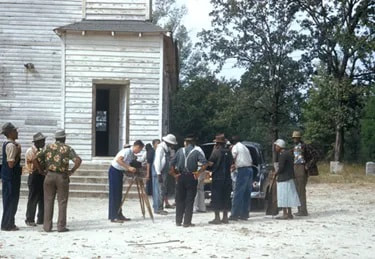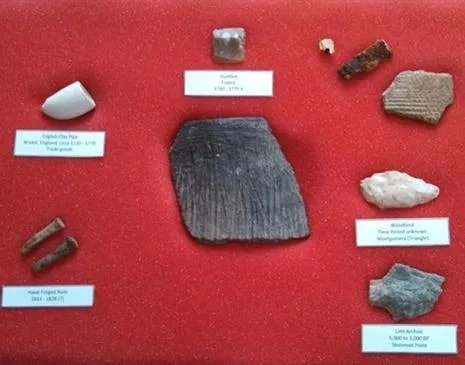ALABAMA OLD FEDERAL ROAD MUSEUM
The Ridge Interpretive Center is physically located on Macon County Road 10 in the Warrior Stand Community about twelve miles south of Tuskegee and nine miles north of Hurtsboro. Visit our Contact Us page for a map and directions.
Mailing address: 10735 County Road 10
Union Springs, AL 36089
Email: [email protected]
Facebook: www.facebook.com/TheRidgeMaconCountyArchaeologyProject
Mailing address: 10735 County Road 10
Union Springs, AL 36089
Email: [email protected]
Facebook: www.facebook.com/TheRidgeMaconCountyArchaeologyProject
Our Story
The Ridge Project pays homage to a cluster of historic rural communities located along a ridge line in southeast Macon County, Alabama where Native Americans created a trading path long ago. The path became a segment of The Federal Road, the main route for pioneer emigration to the Old Southwest during the great "Alabama Fever" land rush.
Our MissionTo provide classroom resources and educational programs and events about our region's historical and cultural significance for the benefit of students, teachers, the local community, and visitors of all ages.
|
Our NameThe Ridge Macon County Archaeology Project derives its name from the topography found in southeastern Macon County, Alabama that divides the drainage basins of the Chattahoochee and Tallapoosa Rivers.
|
Our Timeline The Ridge communities bustled with Native American activity from pre-historic times: pioneer activity from 1817-1836, and antebellum activity from 1836-1865. From the Civil War throughout Reconstruction, and from the rise of Tuskegee Institute’s outreach beginning in the 1880s to the mid-1950s, The Ridge and adjacent communities experienced major shifts in population, agriculture, the economy, and in the centers of power in government and education. Today southeast Macon County spans a rural historic landscape with a legacy that is reflected in the residents who are a community of descendants of the original free and enslaved Alabama Fever settlers.
|
Historical Significance "The chances are good that all who trace their ancestry to anywhere in Alabama south of the Tennessee Valley have a forebear who came over the Federal Road. During its period of maximum use, when "Alabama Fever" was epidemic in the Carolinas and Georgia, the population of the territory (later the state) increased by over half a million."
Southerland & Brown, The Federal Road through Georgia, the Creek Nation, and Alabama, 1806-1836, 1989, University of Alabama Press. |
What We Are Doing
- Providing Alabama standards-based K-12 educational resources for classroom and on-site interactive learning.
- Operating The Ridge Interpretive Center to preserve, display, and interpret regional artifacts, maps, photos and other historical information.
- Conducting archaeological excavation, research and analysis to add to the current body of knowledge about southeast pre-historic Native Americans, the Creek Indian Nation, The Federal Road and Alabama Fever migration.
- Archiving genealogy, family and oral history records and information about the ancestors and descendants of The Ridge.
Highlights
- Prehistoric - Excavated artifacts at The Ridge Project confirm that the Native American presence there spans the Archaic, Woodland, and Mississippian cultural periods. The Native American trading path through The Ridge was essential for the deer-skin trade between the Creek Indians and the colonists. In return for deer-skins, the Creeks acquired European items such as guns and other weapons, ammunition, cloth and clothing, beads, and metal tools.
- Creekwood, an antebellum mansion, is located within The Ridge Project area on County Road 79. The mansion, built in 1850 is listed on the National Register of Historic Places.
- Boromville, formerly Fort Bainbridge, was the location of Fort Bainbridge, a military supply outpost during the Creek Indian conflict. The village was also the location of Lewis's Tavern. Lewis's Tavern was one of three "Alabama Fever" stage coach taverns in our area.
- Numerous sites located in The Ridge were used as "round-up" locations during the infamous U.S Public Health Service Syphilis Study, also known as the Tuskegee Syphilis Study. U.S. Public health workers met study subjects at these locations to perform exams and/or to transport them to Tuskegee for exams or procedures.







